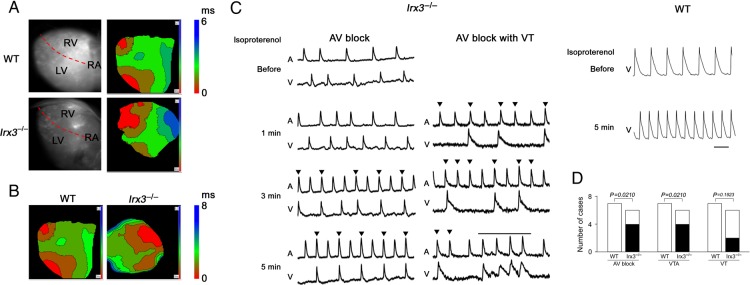Figure 2.
Ex vivo optical epicardial mapping and arrhythmia development in Irx3−/− mice. (A) Representative optical epicardial mapping in wild-type and Irx3−/− mice in basal condition. (B) Representative optical epicardial mapping in wild-type and Irx3−/− mice after isoproterenol application. In Irx3−/− mice, epicardial breakthrough occurs from the base of the right ventricle, and propagates to the apex; the propagation of depolarization became markedly slow. (C) Arrhythmias observed in wild-type and Irx3−/− mice after isoproterenol application. In Irx3−/− mice, atrio-ventricular block and atrio-ventricular block with non-sustained ventricular tachycardias occurred. In wild-type mice, only sinus tachycardia occurred. Reverse triangles indicate atrial action potential without following ventricular action potential. Solid bar indicates non-sustained ventricular tachycardias. (D) Comparison of frequency of atrio-ventricular block, ventricular tachyarrhytmias, and ventricular tachycardias after isoproterenol injection in wild-type (n = 7) and Irx3−/− (n = 6) mice. Statistical analysis was done with Fisher's exact test.

